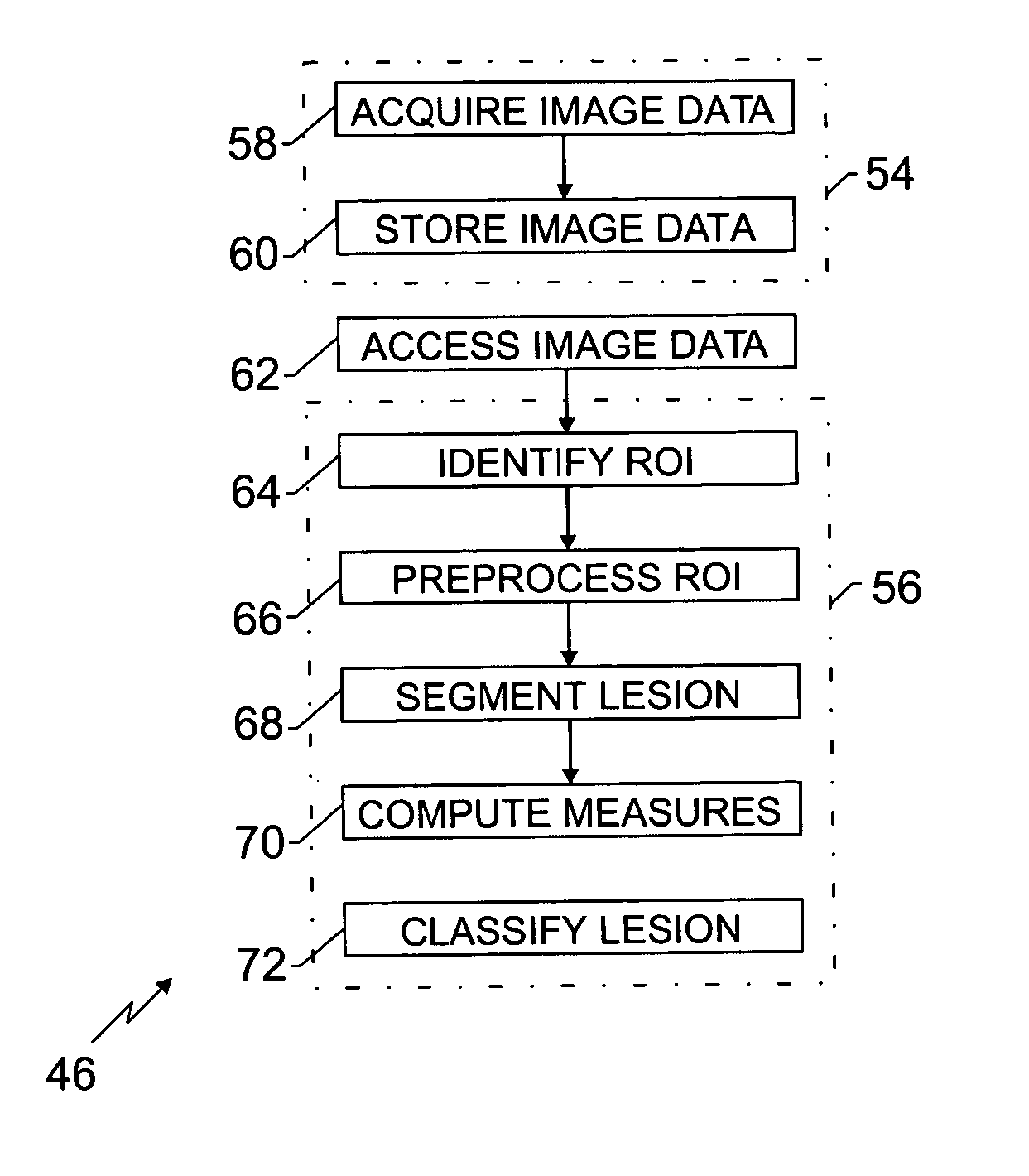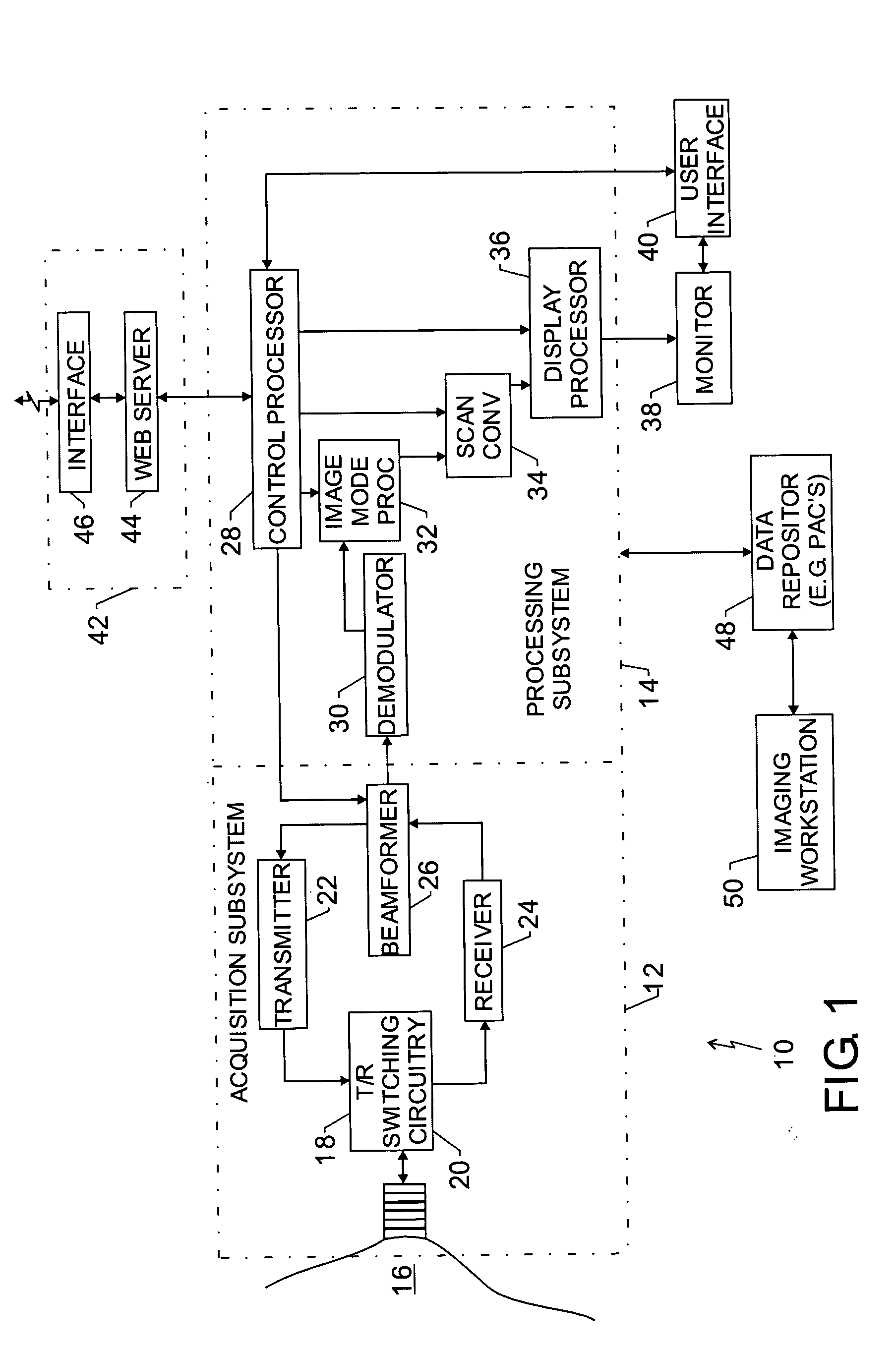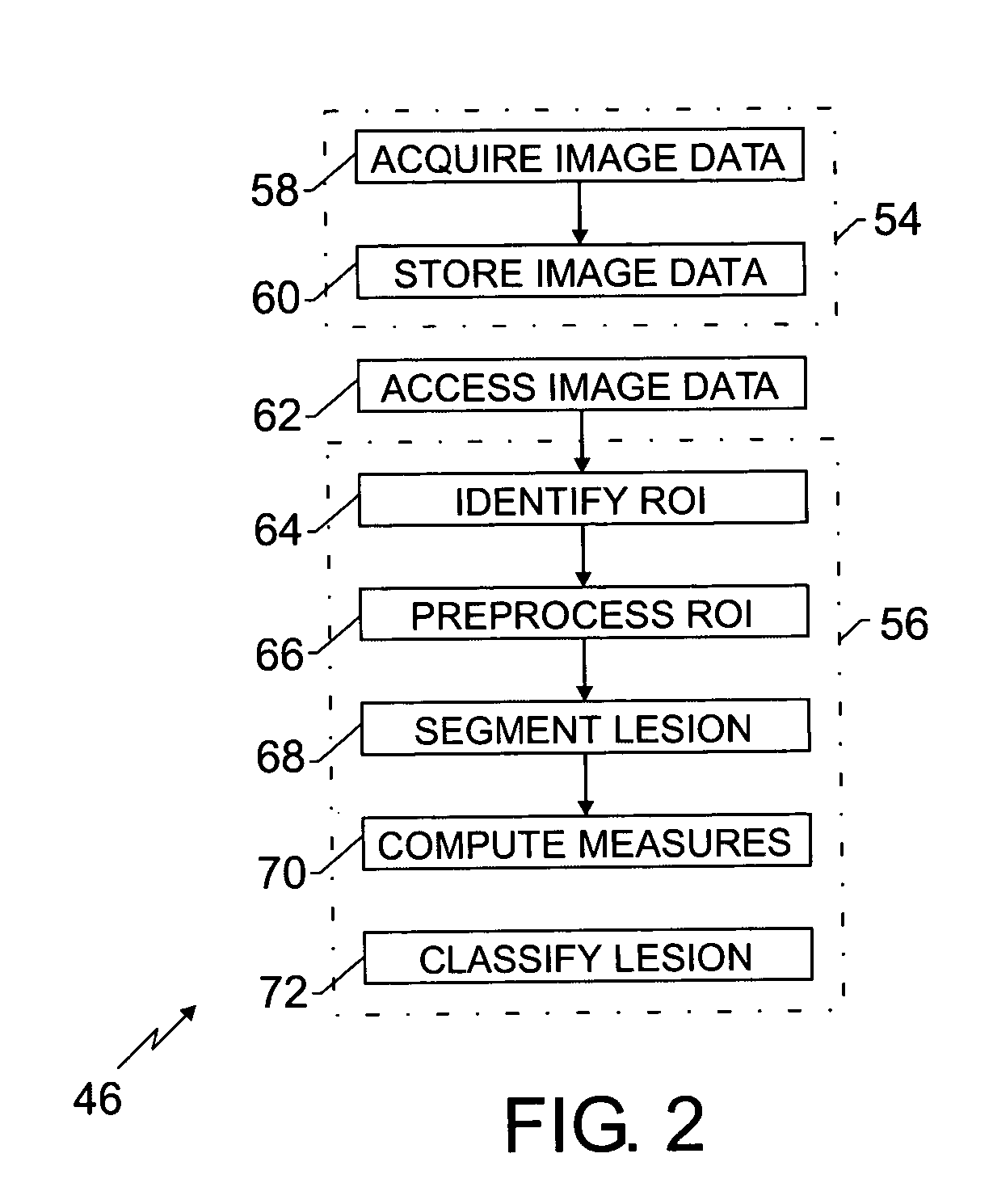Classification of breast lesion method and system
a breast lesion and classification technology, applied in the field of imaging systems, can solve the problems of inability to automate the implementation of tools and techniques in image processing to extract these features and quantify them for accurate classification, and the inability to achieve accurate classification, so as to and enhance the quality of the image
- Summary
- Abstract
- Description
- Claims
- Application Information
AI Technical Summary
Benefits of technology
Problems solved by technology
Method used
Image
Examples
Embodiment Construction
[0018]FIG. 1 is a block diagram of an embodiment of an ultrasound system 10 implemented in accordance to one aspect of the invention. The ultrasound system comprises of acquisition subsystem 12 and processing subsystem 14. The acquisition subsystem 12 comprises a transducer array 18 (comprising a plurality of transducer array elements), transmit / receive switching circuitry 20, a transmitter 22, a receiver 24, and a beamformer 26. Processing subsystem 14 comprises a control processor 28, a demodulator 30, an imaging mode processor 32, a scan converter 34 and a display processor 36. The display processor is further coupled to a monitor for displaying images. User interface 40 interacts with the control processor and the display monitor. The control processor may also be coupled to a remote connectivity subsystem 42 comprising a web server 44 and a remote connectivity interface 46. Processing subsystem may be further coupled to data repository 48 to receive ultrasound image data. The d...
PUM
 Login to View More
Login to View More Abstract
Description
Claims
Application Information
 Login to View More
Login to View More - R&D Engineer
- R&D Manager
- IP Professional
- Industry Leading Data Capabilities
- Powerful AI technology
- Patent DNA Extraction
Browse by: Latest US Patents, China's latest patents, Technical Efficacy Thesaurus, Application Domain, Technology Topic, Popular Technical Reports.
© 2024 PatSnap. All rights reserved.Legal|Privacy policy|Modern Slavery Act Transparency Statement|Sitemap|About US| Contact US: help@patsnap.com










